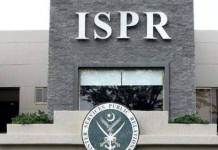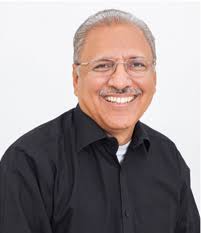NEW DELHI: India will not deploy troops in Afghanistan, its defence minister said on Tuesday, but promised to boost support for a new United States (US) strategy in the war-torn country.
After talks with US Defence Secretary Jim Mattis, Nirmala Sitharaman said India was prepared to increase training for Afghan personnel and develop infrastructures such as schools and hospitals.
“India’s contribution has been on these counts and we shall expand if necessary,” she told a news conference with Mattis.
“However, as we have made it very clear, there should not be boots from India on the ground.” Mattis’ trip to India is the first by any member of President Donald Trump’s cabinet. It comes just after Trump unveiled a new Afghanistan strategy and urged New Delhi to help. “We applaud India’s invaluable contributions to Afghanistan and welcome further efforts to promote Afghanistan’s democracy, stability and security,” Mattis said.
India has long vied with Pakistan for influence in Afghanistan by building dams, roads and a new parliament in the troubled country. Last year it offered some $1 billion in aid.
It has also trained more than 4,000 Afghan National Army officers and provided helicopters to the Afghan Air Force.
Earlier, Mattis held talks with Indian leaders on Tuesday, vowing to jointly stamp out militant sanctuaries and seeking India’s greater involvement in helping to stabilise Afghanistan.
“There can be no tolerance of terrorist safe havens,” he said in a statement. “As global leaders, India and the United States resolve to work together to eradicate this scourge.”
Defence ties between India and the United States have expanded rapidly, with New Delhi buying US weapons worth $15 billion over the last decade, moving away from traditional supplier Russia.
Military experts say US weapons transfers aim at bolstering Indian capabilities to develop a counterweight against China’s growing assertiveness in recent years.
Indian and US negotiators are now trying to move forward with a deal to supply the Indian navy with 22 Sea Guardian drone aircraft, whose June approval by the US government was the first such clearance to a non-NATO ally.
India wants the unarmed drones to help its navy lengthen the duration of its surveillance in the Indian Ocean.
Expanding naval cooperation with India was a top priority, Mattis said, adding that three-way exercises involving the United States, India and Japan boosted operational cooperation.
The United States has been critical of China’s build-up of military facilities in the South China Sea. But New Delhi turned down a US suggestion of regional joint patrols with the Indian navy, for fear of a Chinese backlash.
“China looms very large for both countries,” said Dhruva Jaishankar, a specialist on India-US relations at Brookings India.
“The strategic underpinning of India-US defence ties is in the common concerns they have over China, over its revisionism.”
The Indian air force has also asked for 90 armed Avenger Predator drones that experts say could be deployed for cross-border strikes.
Such a sale would need White House and Congress approval, sources said. But Pakistan and, possibly, China could see the move as destabilising. Dronemaker General Atomics is pleased the Indian government has won approval for the surveillance version of the drone, said Vivek Lall, its chief executive for US and international strategic development. “Not only will this platform enhance India’s capabilities in the areas of maritime domain awareness and security, but the interoperability with one of the US’s most important strategic partners will contribute to security across the region.”
Published in Daily Times, September 27th 2017.















